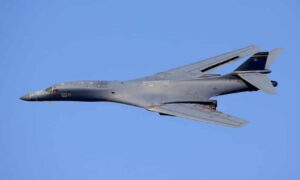
US retaliation, when it came, was broad and deep, and telegraphed five days in advance.
The White House, the Pentagon and state department had spent the best part of a week talking about the response to Sunday’s drone attack on a US base in northern Jordan, which killed three Americans and wounded more than 30.
They warned that retaliation against the suspects, primary among those the Iran-backed Kataib Hezbollah militia, would be “multi-tiered” and continue over many days, but when the opening salvo came in the early hours of Saturday Middle Eastern time, it still caused some surprise in its range and scale.
According to US Central Command, 85 targets were hit in seven facilities, four in Syria and three in Iraq, with more than 125 precision munitions, using a mix of drones and long range B1 bombers flying from US territory in a demonstration of the reach of the US air force.
Tonight’s strikes in western Iraq eastern Syria are FAR bigger than any action undertaken before against Iran’s proxies – huge secondary explosions on both sides of the border suggest big rocket/missile depots have been hit,” Charles Lister, senior fellow of the Middle East Institute, said on the social media platform X.
Joe Biden said the targets were facilities used by Iran’s Islamic Revolutionary Guard Corps (IRGC) and “affiliated militia”, and he made clear that it was just the beginning. The full response for the attack on the Tower 22 base would “continue at times and places of our choosing”.
The limits of the response were as clear as its scale. As expected, no targets were hit on Iranian territory, and senior administration officials made clear Iran was out of bounds for any future sorties as well.
